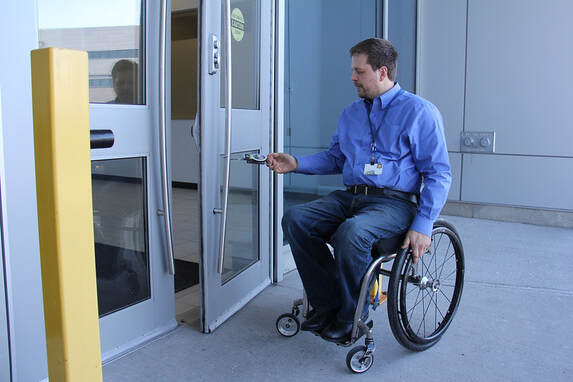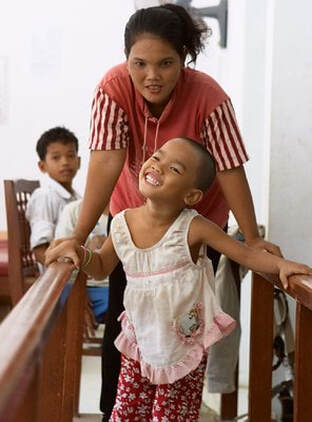|
I’m facing the retirement of two helpful physicians and knowing their replacements will be different in their approach to my illness. I am concerned about my care, especially if I have a relapse. I am grateful for all the ways these two physicians, known in my book as Dr. Three and Dr. Special, have helped me. I wish them a blessed retirement yet wish they could remain in the field for patients like me. A patient has to be assertive with, provide a timeline of illness events and tests to, and review records from physicians. I did all three with these two doctors after negative experiences with previous physicians. The patient/provider relationship is vital. There is a crucial need for physicians with knowledge of ME/CFS care, especially in light of the increase in cases of long COVID, or post-acute sequelae of COVID. If you’re a budding health care professional who wants to know more about ME/CFS, email me! If you want additional lessons learned from chronic illness, email me so that I send them your way! Darla Nagel is a biomedical copy editor who has an invisible chronic illness. She wants to educate healthcare professionals and encourage patients. If you want to receive quarterly updates from her, email darla.nagel{a}gmail.com.
0 Comments
Melissa Blake’s disability is visible, and so is her pride about it on social media. An Illinois resident living with a genetic bone and muscular disorder, she has made her voice heard in publications such as Psychology Today, the Chicago Tribune, and HealthyWomen as well as her blog, So About What I Said. Her core message is simple: listen to people with disabilities. Blake sees that as the way past ableism. As she wrote in HealthyWomen this year, “My hope for a brighter, less ableist future is the reason I continue to be so visible and vocal, especially on social media.” She is an honest, down-to-earth woman with a love of TV and pop music. She is a true friend to the disability community. Darla Nagel is a biomedical copy editor who has an invisible chronic illness. She wants to educate healthcare professionals and encourage patients. If you want to receive quarterly updates from her, email darla.nagel{a}gmail.com.
I read an article that is part reflection on the cultural or philosophical purpose of illness memoirs and part review of What Doesn’t Kill You: A Life With Chronic Illness by Tessa Millerby. The article, “The Consolation of the Illness Memoir” by Anna Altman at The New Republic, caught my attention as the author of an illness memoir. Some intriguing quotes from the article:
The article’s author notes that she has chronic migraine. Even if illness memoirs so far have failed to revolutionize American health care and cultural treatment of people with chronic illnesses, I believe the books are well worth writing and reading, for the benefit of patients and those closest enough to them to truly listen. Have you written one? If so, let me know, and I'll read it! Darla Nagel is a biomedical copy editor who has an invisible chronic illness. She wants to educate healthcare professionals and encourage patients. If you want to receive quarterly updates from her, email darla.nagel{a}gmail.com.
Companies shouldn’t hesitate to hire qualified job candidates who have disabilities or chronic illnesses. These employees, overall, strive not to be burdens but instead to succeed. They are used to solving problems related to access, inclusion, and productivity, often in creative ways or with a team. See how many useful soft skills are mentioned in that sentence? Imagine the increased profits that could be realized through just one employee with these skills and work ethic. Disabled employees have plenty to offer, so offer them the job! Darla Nagel is a biomedical copy editor who has an invisible chronic illness. She wants to educate healthcare professionals and encourage patients. If you want to receive quarterly updates from her, email darla.nagel{a}gmail.com.
My first-ever blog post promoted person-first language when discussing people with disabilities, but some disabled people are advocating for identity-first language. We can embrace our disabilities as part of our identities in this way. It’s important to ask the people, when possible, the language they prefer to be used to describe them. If you’re curious about the reasons for the recent resurgence in identity-first language, here’s a summary of “Yes, You Can Call Me Disabled” by Anjali J. Forber-Platt, assistant professor at Vanderbilt University. Disability can be something to be proud of, but person-first language minimizes that point of pride. This pride could lead to positive changes for disabled people, such as improved access to resources and higher employment rates in more rewarding careers (thanks to reasonable accommodations). Forber-Platt says, “Intentional avoidance of the term disability sends the message that there’s something inherently negative or bad about having a disability. And disabled people are tired of non-disabled people telling us what they think is best for us.” Watch for further discussion of the benefits of hiring disabled employees in a future post. Darla Nagel is a biomedical copy editor who has an invisible chronic illness. She wants to educate healthcare professionals and encourage patients. If you want to receive quarterly updates from her, email darla.nagel{a}gmail.com.
We did it! We made it through 2020! We did what it took to keep one another safe and stayed alive. We’re ready for 2020 to be over and a bit apprehensive about 2021, but we’re all here. That is worth celebrating. Christmas is worth celebrating, too, even if it’s by ourselves where we live. Jesus came to this earth and did what we could not do: lived a perfect life, then gave up his life for the forgiveness of all our sins. Through him we have eternal, perfect life in heaven! The news can’t get any better than that! Merry Christmas, and Happy New Year! Darla Nagel is a biomedical copy editor who has an invisible chronic illness. She wants to educate healthcare professionals and encourage patients. If you want to receive quarterly updates from her, email darla.nagel{a}gmail.com.
Did you know there is a scholarly field called disability studies, and did you know there is a disability justice movement? Both shed light on the experiences and societal needs of people with disabilities and seek the inclusion of a historically shunned group. To learn more about disability justice, read the works of activist Tobin Siebers and check out the Twitter hashtags #ThingsDisabledPeopleKnow and #DisabledAndCute. Quote from Siebers: “Disability marks the last frontier of unquestioned inferiority because the preference for able-bodiedness makes it extremely difficult to embrace disabled people and to recognize their unnecessary and violent exclusion from society” (Tobin Siebers, quoted in Amanda Leduc, Disfigured, page 209). Read my review of Disfigured below. Darla Nagel is a biomedical copy editor who has an invisible chronic illness. She wants to educate healthcare professionals and encourage patients. If you want to receive quarterly updates from her, email darla.nagel{a}gmail.com.
Amanda Leduc’s Disfigured: On Fairy Tales, Disability, and Making Space opens our eyes to how the portrayal of disabilities in fairy tales sets children up to shun disabled people, and she advocates for more accurate narratives of these excluded people. She weaves in her personal account of growing up with cerebral palsy, which keeps the book from becoming a scholarly work inaccessible to the majority of readers. You’ll never view the Disney princesses the same way again. This book was educational even for someone who has spent 10 years creating and sharing her own narrative of life with a disabling chronic illness that doesn’t have the classic fairytale happy ending, an ending which, according to Leduc, is not only unrealistic but also psychologically unhealthy. Great quotes from the book: “We exist in a world where happiness is synonymous with not being disabled—anything less than this comes across as undeserving, simply through virtue of not meeting the able-bodied ideal” (page 210). “This conceptualization of disability—at best merely a metaphor for psychological ills that can be overcome, at worse a punishment or judgment that can be reversed through magical or spiritual means, though only if one deserves it—does a disservice to the actual lived experience of what it means to occupy a different body in the world….denying the lived reality of what it means to be a disabled body in the world denies the possibility of growth on the disabled person’s terms” (page 216). Darla Nagel is a biomedical copy editor who has an invisible chronic illness. She wants to educate healthcare professionals and encourage patients. If you want to receive quarterly updates from her, email darla.nagel{a}gmail.com.
In July I attended a virtual summit for people with chronic illnesses hosted by Lisa Sniderman. The speakers included practitioners, counselors, and patients, and for me two interviewees stood out: Danielle Lowe (music therapist for people with mental health conditions) and Amy Oestreicher (author, health advocate, and survivor of an exploded stomach). Lowe said, “So I guess what I would offer up is to, even though it can be hard sometimes, to advocate for ourselves, to make an effort to advocate for yourself when it’s difficult for what you need, whether it’s an accommodation or extra time or a different appointment or extra appointment, less appointments, to really check in with yourself for what you’re needing and ask for it. And if the other person isn’t willing to kind of accept that then you shouldn’t, you should find someone that will, and never be afraid [of] asking for what you need or for more help.” Oestreicher said, “Hope isn’t like this inspirational beam of light that’s just like, ‘Okay, I am going to have hope.’ Hope is like a job that we have to actively create….Hope is the fuel that gets us down a road that’s uncertain.” If you want additional lessons learned from chronic illness, email me, and I’ll send them your way! Darla Nagel is a biomedical copy editor who has an invisible chronic illness. She wants to educate healthcare professionals and encourage patients. If you want to receive quarterly updates from her, email darla.nagel{a}gmail.com.
“At nearly 20 percent of the U.S. population, people with disabilities represent one of the largest minority groups, but it has often been an overlooked one. That may be changing with a new wave of activism by those who want to change the way disability is viewed in the U.S.” —National Center on Disability and Journalism’s website We’re not seeing as much representation of people with visible and invisible disabilities in the media as we should given the recent surge in diversity/inclusiveness campaigns. Have you seen efforts to ensure vulnerable patients have easy access to personal protective equipment? Have you seen people using mobility aids or service animals in those ads that harp on how “we’re all in this together”? Now is the time to assert that our lives and our needs matter, too, and ought to be in the spotlight rather than shoved off to one side. What can people without disabilities do? Start by watching your language. Unless we ask to be called crippled, handicapped, impaired, or suffering, don’t call us that. We are people with disabilities, not the lifeless-sounding “the disabled.” Ask us whether and how we want our conditions mentioned in your writing and speeches. Then listen to us! You can learn more about acceptable versus unacceptable terms to use at the website mentioned above. The Americans with Disabilities Act was passed on July 26, 1990. #NCDJ30for30 Darla Nagel is a biomedical copy editor who has an invisible chronic illness. She wants to educate healthcare professionals and encourage patients. If you want to receive quarterly updates from her, email Darla.Nagel{a}gmail.com.
|
Author:
|




 RSS Feed
RSS Feed